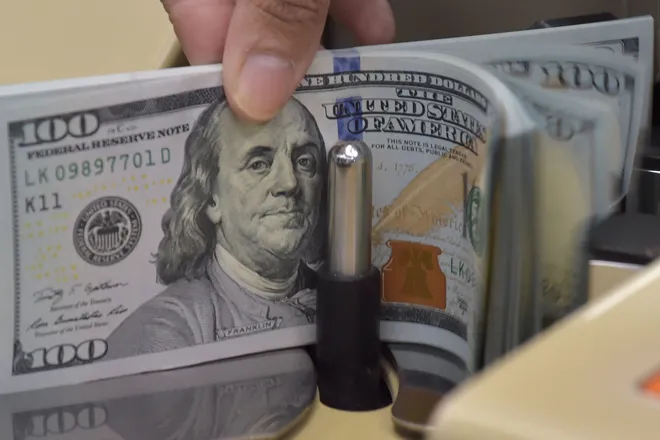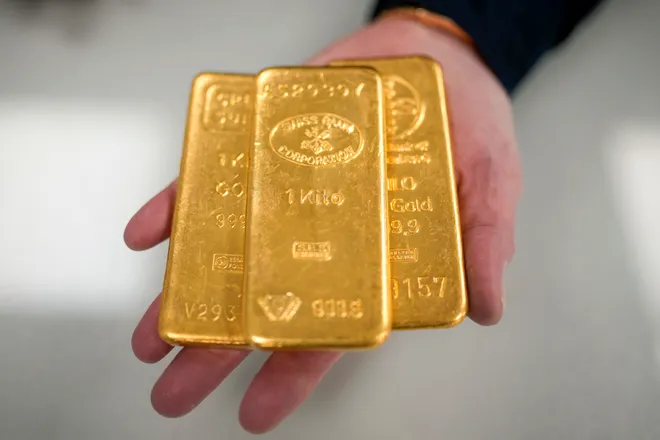Opinion: The US dollar's winning streak is ending. What does that mean for you?
The dollar has decreased 5% from its June high as markets looked ahead to the Federal Reserve cutting its key interest rate last week.
Republican presidential nominee Donald Trump and his running mate, Sen. JD Vance of Ohio, have expressed that they'd welcome a weaker dollar as a means to support domestic manufacturing.
With inflation on many voters’ minds before the November election, what would a weaker dollar mean for your pocketbook and your investments, and is there anything you can do about it?
The dollar has risen in value for most of the past 10 years, but its winning streak has likely come to an end. To be clear, the dollar is not going anywhere, and it will likely remain the world’s dominant currency for a long time to come. Even so, it is realistic to think that the dollar is much more likely to decline over the coming years after its long stretch of gains, and many investors are preparing their portfolios for that outcome.
The US dollar: From your interest to the national interest
Dollar appreciation flatters the returns of U.S. assets compared with investments abroad and lowers the cost of foreign goods and travel. For these reasons, currency appreciation is often considered a good thing ‒ and U.S. secretaries of Treasury since at least the Clinton administration have maintained that a strong dollar is in the national interest.
It might now be time to prepare for a new U.S. dollar regime.

The first reason is straightforward: The Federal Reserve lowered its benchmark interest rate by a half percentage point on Sept. 18, its first rate cut in four years.
The wave of dollar strength had started when the Fed began tightening while interest rates were negative in both Europe and Japan. As a result, the United States became the natural place for large companies and global investors to park their cash. Fed rate cuts could reduce this demand for dollars, especially compared with currencies like the Japanese yen where interest rates are now moving up.
Opinion:Record-high national debt is fiscal time bomb. Congress must defuse it.
Downside risks to the dollar also reflect a variety of longer-running macroeconomic and geopolitical trends. For example, fiscal policy under both Republican and Democratic administrations has increasingly involved large deficit and rising public debt ‒ even in periods when the economy was relatively strong.
A third of the borrowed funds come from overseas investors, and there may come a point at which international investors have no further appetite for dollar-denominated bonds.
How US politics and foreign policy also affect the dollar
Although economic factors like the level of interest rates typically drive currency markets, politics can also play a role.
Most scholars agree that the dollar’s dominant international role is underpinned, at least in part, by U.S. military hegemony. Countries that benefit from U.S. security guarantees are more likely to use the dollar in trade and finance.
If the United States were to back away from its overseas commitments ‒ like its support for NATO or its bilateral treaties with Japan and South Korea ‒ foreign governments could begin to diversify away from the dollar.
Opinion:Did American tax dollars help fund deadly pager attack in Lebanon?
U.S. foreign policy also discourages international use of the dollar through the aggressive use of financial sanctions. Since the 2003 U.S.-led Iraq War, the American public’s interest in active military conflict has waned, and elected officials have instead looked to financial sanctions to achieve the nation’s foreign policy goals.
In February 2022, President Joe Biden imposed sanctions against Russia, saying the country is in "the beginning of a Russian invasion of Ukraine."
While sanctions can be less costly in terms of blood and treasure, they may also encourage other nations to find alternatives to dollar-centric banking and payments systems. Transitioning to alternative payments networks can be costly but could be worth it, especially for countries at risk of near-permanent exclusion from the global financial system, such as Russia or Iran.
Naturally, there are reasons why foreign holders of dollars will not quickly turn away from U.S. capital markets. These include the profitability of major American firms and the ongoing innovation of U.S.-based startups.
There seems to be something about modern American capitalism ‒ the combination of tax and bankruptcy laws, venture capital investing and its connection to leading universities, extensive domestic energy production and many other variables ‒ that is not easily replicable around the world.
Unless these factors were to change, dollar-based assets will remain competitive with overseas alternatives, and any dollar depreciation will likely be gradual.
Investors have several options for protecting their portfolios from the risk of dollar depreciation, including diversifying into non-U.S. stocks and bonds, or by investing in gold (through physical bar and coins or through exchange-traded funds).

Owning assets that can benefit when the dollar declines can also help insulate your personal finances from any subsequent increase in imported inflation.
From our research at Grayscale, a crypto asset manager, bitcoin may be the best investment option for anyone concerned about dollar depreciation and/or stubbornly high inflation. Bitcoin is an alternative money system based on blockchain technology, and a scarce digital asset that can be considered a digital alternative to physical gold.
According to a May national survey by Harris Poll, almost 1 in 5 Americans now own bitcoin, while about 50% of Americans say they are unfamiliar with bitcoin and crypto.
For bitcoin believers, this is a sign that the demand for the new asset is here to stay, but that adoption still has significant room to grow. As more financial professionals learn about bitcoin, we are optimistic that they will appreciate its fundamentals characteristics, and that it will increasingly play a role in their portfolios.

Zach Pandl is the head of research at Grayscale, a leading crypto asset manager.
Disclaimer: The copyright of this article belongs to the original author. Reposting this article is solely for the purpose of information dissemination and does not constitute any investment advice. If there is any infringement, please contact us immediately. We will make corrections or deletions as necessary. Thank you.







